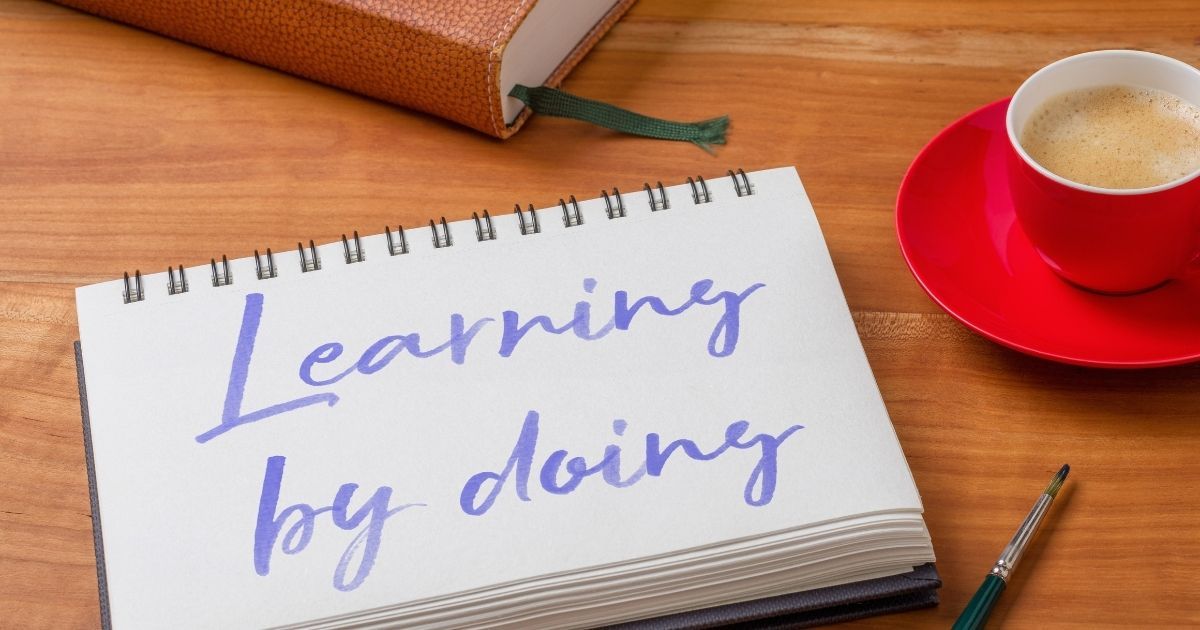Learning AI by doing: Why hands-on experience matters for students

AI courses are everywhere now. Videos, tutorials, and workshops promise to teach students everything they need to know about artificial intelligence. But here's what most programs miss: watching someone else use AI isn't the same as using it yourself.
A recent study from Harvard Business Publishing shows that the people who truly master AI aren't the ones who study it the most - they're the ones who experiment with it the most. (Harvard Business Publishing 1)
Hands-on learning changes everything
Here's what researchers found when they studied AI-fluent professionals:
They learn by experimenting. AI-fluent individuals were two times more likely to have learned through hands-on experimentation compared to those who stuck to traditional learning methods.
They practice often. A third of fluent learners engage with AI daily, not in long study sessions, but through quick bursts of real-time application.
They treat AI as both subject and teacher. Unlike other skills where you only see the outcome, AI gives you instant feedback, suggests improvements, and helps you learn as you go.
Their results speak louder. Among AI-fluent professionals, 81% reported being more productive, 54% more creative, and 53% better equipped to solve complex challenges.
The pattern is clear: you can't build AI fluency from the sidelines.
Theory vs. practice
Think about learning to play tennis. You could watch Serena Williams videos for hours, study her technique, and memorize every rule of the game. But until you pick up a racket and hit the ball yourself, you're not really learning tennis.
AI is the same way. You can watch tutorials on how to prompt ChatGPT or how machine learning works. But until you're actually building something—testing prompts, debugging code, iterating on an idea - the knowledge stays theoretical.
The students who stand out are the ones who:
- test different approaches and compare results,
- build real projects that solve real problems,
- experiment boldly without fear of making mistakes, and
- refine their work based on what they learn along the way.
That's the difference between knowing about AI and being fluent in AI.
The real barrier isn't motivation
Most students want to learn AI. They're curious, they're excited about the technology, and they understand why it matters.
The problem? They're not getting the opportunity to practice.
Many programs focus on teaching concepts without giving students a safe space to experiment. They emphasize theory over application. They provide information but not experience.
According to the Harvard study, lack of organizational support - not lack of interest - is the biggest barrier to developing AI fluency. People need time, guidance, and meaningful opportunities to engage with the technology hands-on.
Learning AI works best as a team effort
Here's another insight from the research: people learn AI better when they learn together.
When students work on projects in groups, they share discoveries, learn from each other's mistakes, and build on each other's ideas. Peer learning turns individual experimentation into collective growth.
The most effective learning happens when AI gets embedded into real collaboration - not treated as a separate subject you study in isolation, but as a tool you use while solving actual problems alongside others.
The Flintolabs difference
This is why at Flintolabs, we don't just have videos or courses. Our immersive AI labs are a unique aspect of the program where every student builds apps right from the first session.
We believe AI education should feel like learning to ride a bike, not memorizing the physics of balance. You learn by doing, by falling, by getting back up, and by trying again.
Our students don't watch someone else build an app - they build it themselves. We curate labs on complex concepts like augmented reality where you build Snapchat-style apps. You learn computer vision by creating face filters. You understand natural language processing by building chatbots.
By treating app building as hands-on experimentation, students discover how to:
- turn an abstract AI concept into a working product,
- debug, iterate, and improve through trial and error, and
- gain real experience with the tools that are shaping every industry.
The bottom line
AI fluency isn't built through passive learning. It's built through active experimentation.
If you want to truly understand AI, not just know about it, but know how to use it, build with it, and create with it, you need to get your hands dirty. You need to experiment, fail, learn, and build.
Reference
Harvard Business Publishing Corporate Learning. "Learning Through Experimentation: Why Hands-On Learning Is Key to Building an AI-Fluent Workforce." Harvard Business Impact, March 2025, harvardbusiness.org/insight/learning-through-experimentation-why-hands-on-learning-is-key-to-building-an-ai-fluent-workforce.
Comments (0)
No comments yet. Be the first to share your thoughts!


